One of the most iconic legacy knits is the Irish Aran sweater, named for the islands off the west coast of Ireland where they were first crafted. The origin story of how these hearty sweaters (or jumpers if you’re going to be all proper about it) was romanticized into a legend where all the patterns have meaning and all the sweaters can be used to identify the clan that knit it. And if that makes you happy, stop reading here and skip a couple paragraphs, because *spoiler alert* it’s not true.
Aran sweaters date to the 1890s. The islanders knit before this time, but it was mostly the basic utilitarian wears knitted everywhere like socks. The Congested Districts Board for Ireland (CDB) was established as a government plan to help alleviate poverty in the north and west of the country. They created public works projects, modernized farming and supported factories so citizens could earn a living. When it came to the Aran Islands, they saw people and sheep. People have hands. Sheep have wool. The CDB incubated the cottage industry that produced the original hand knit jumpers that have become a timeless international style.
Scottish knitters were brought to the islands to get the project started. The traditional Scottish Guernsey sweater had cables on the shoulder seams or shoulder areas front and back with stockinette stitch for the rest of the garment. It was the Aran knitters who added cabling and decorative stitches from neck to waist.
The first commercial patterns for an Aran sweater were printed by Patons of England in the 1940s. By the 1950s, knitting patterns were available worldwide, as were finished sweaters, the production of which had spread off the island into a full-on Irish cottage industry. The Standun Company at one time employed 700 hand knitters to help keep up with demand.
Original Aran sweaters were knit from the wool sheared, carded and spun on the islands. It was a thicker gauge yarn, natural ivory, gray, brown or black in color and with the lanolin left in to give it some water repellency. The thickness of the yarn may be why they caught on with hand knitters–bigger yarn, bigger needles, fewer stitches, faster finished sweater. Aran style sweaters now come in any color and any style, but the traditional creamy ivory sweater will always be iconic.
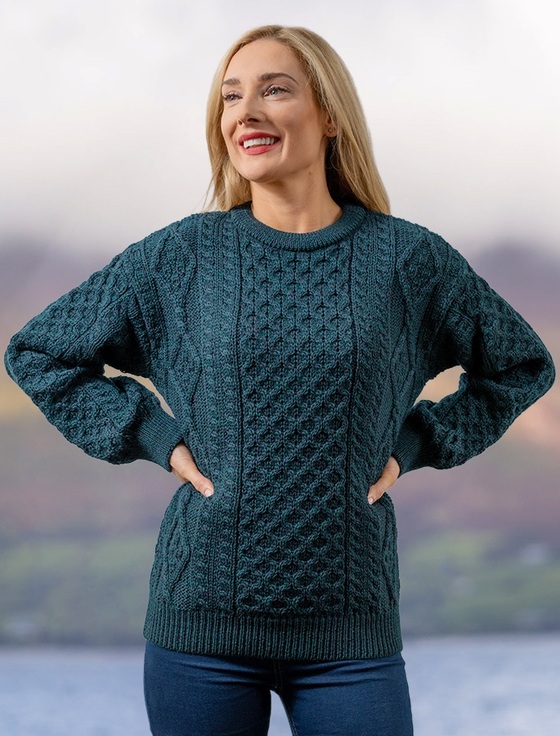
Wearing and Caring for Vintage Aran Sweaters
True vintage woolen Irish Aran sweaters aren’t hard to find. Decades of visitors to Ireland have brought them home for themselves and as gifts. It’s not unusual to find them barely worn in thrift stores and in vintage shops. But new or old, wool sweaters who have been living in cedar chests, in closets or in the scourge of moth balls need to be carefully examined for moths. Look for webbing, larvae or tiny holes. We take moths seriously and won’t bring a wool garment into our home until it’s been dry cleaned. You can also freeze your sweater for a couple weeks to kill any moths.
Washable wool is a relatively new concept. Most older wool with shrink when you put it in the washer. “Honey, I shrank the sweater” has happened more times that we will admit to publicly. Once a garment is shrunk, there are things you can do with it. The felted texture is beautiful trimmed into a pillow or sewn into mittens. Shrink enough sweaters and you can make a pretty pieced throw. (But that probably won’t happen to you because you’re probably not as likely to shrink things as we are.)
Like all vintage garments, don’t rely on the label size. Try it before you buy it. For ordering online, compare the measurements to a sweater that fits you well. Allow a little extra room for yourself when reviewing the given flat measurements. You want to be able to add a layer underneath.
Knit a teen an aran sweater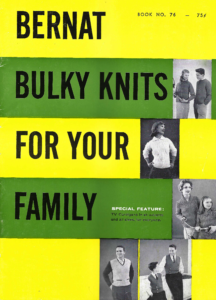
Bernat Bulky Knits for Your Family (1959) has a his and hers sized sweaters for the teen in your life. Knit on size 5 and 8 needles with worsted weight yarn, it’s not an overly complicated pattern and it would be cozy and snug on a winter day.
One question you have to ask yourself is, is a teen responsible enough to care for an aran sweater? In many cases, the answer is absolutely. But just in case, maybe skip the wool for a synthetic that can take many washings, being thrown in the trunk of a car, buried beneath a pile of laundry in their room(where one of my buyers once found a package that she thought had been stolen off her doorstep) and in general, leading the wild life that the clothes of many teenagers lead.
The pattern is a PDF and can be downloaded.
Curious to know more about the knitting traditions of the UK and Ireland? Read more from the V&A Museum here.
Ready to try to knit your own Aran sweater? Try these free patterns from Lion Brand Yarns for her, Hayfield for them, and Lion Brand again for your doggo.
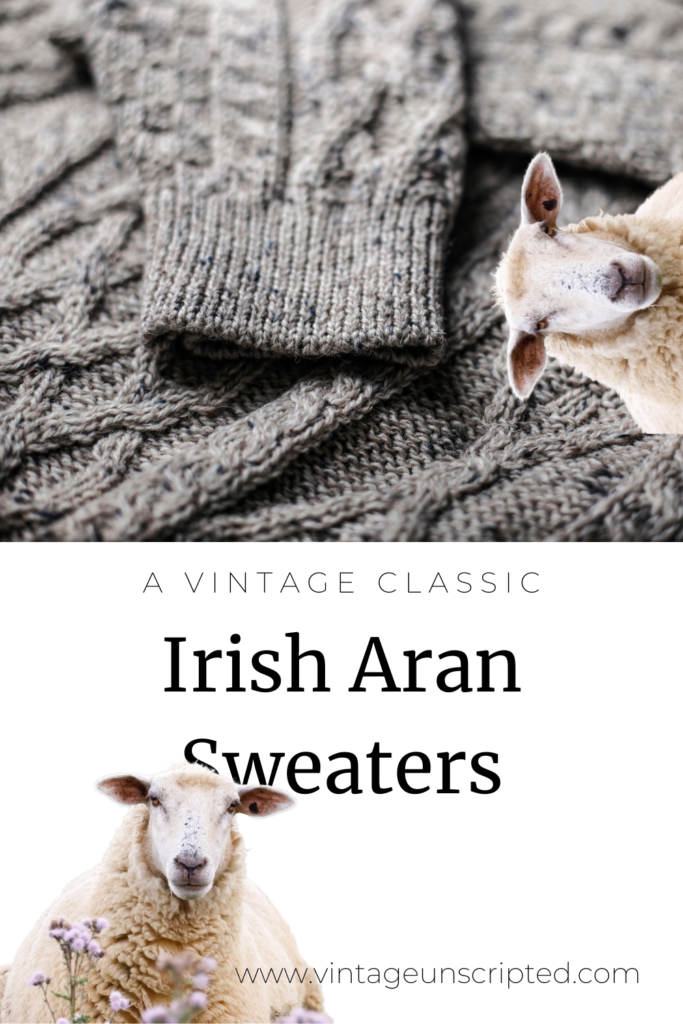

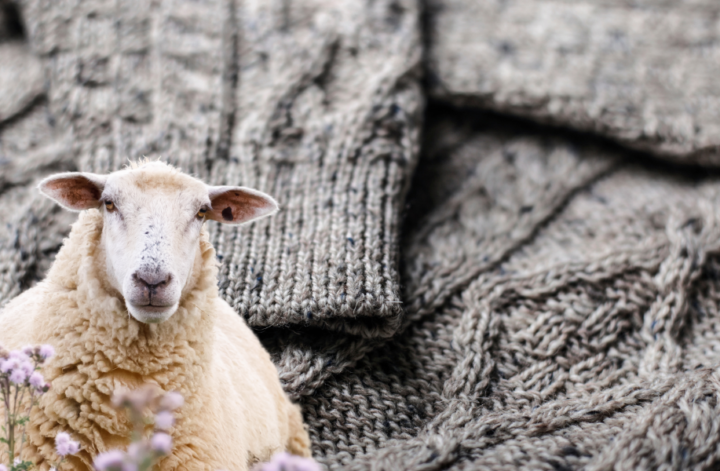
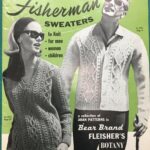





1 comment
What a great and enlightening post about aran knitting. We even heard the “folklore” stories in Ireland about identifying people by the knitting style. One thing about aran sweaters is that due to all of the patterns used that means there is more wool yarn and a warmer sweater as well. I knit a vest and a sweater for my husband which are toasty warm. Another benefit of wool is that it will keep you warm even when wet. Thank you Laurie aka mythbuster!